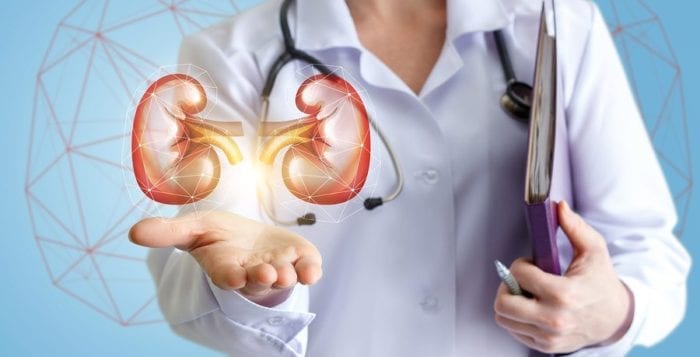Medical Compass: Treatment and prevention of kidney stones

Calcium from supplements may increase risk of kidney stone formation
By David Dunaief, M.D.

Kidney stones are relatively common, occurring more often in men than women (1). I have seen many patients who have a history of forming these stones. Unfortunately, once a patient forms one stone, the incidence of another increases significantly over time. However, there are several ways to reduce your risk.
Kidney stones, or nephrolithiasis, can be asymptomatic (no symptoms at all) or may present with the classic symptoms of blood in the urine and colicky pain. Pain can be intermittent or constant, ranging from dull to extremely painful, described by some as being worse than giving birth or being shot or burned.
The pain may radiate from the kidneys to the bladder and even to the groin in males, depending on the obstruction (2). Stones are usually diagnosed through clinical suspicion and abdominal X-rays and/or noncontrast CT scans.
Unfortunately, the first line treatment for passing kidney stones — at least small ones — involves supportive care. This means that patients are given pain medications and plenty of fluids until the stone(s) pass. Usually stones that are <4 mm pass spontaneously. Location is an important factor as well, with stones closest to the opening of the urethra more likely to pass (3).
Prevention is the way to go
The good news is there are lifestyle changes that can reduce the risk of kidney stones. First, it is very important to stay hydrated, drinking plenty of fluids, especially if you have a history of stone formation (4).
One of the easiest methods is to significantly reduce your intake of calcium supplements, including foods fortified with calcium. There are two types of stones, with calcium oxalate being the dominant one, occurring approximately 80 percent of the time (5). Calcium supplements increase the risk of kidney stones. When physicians started treating women for osteoporosis with calcium supplements, the rate of kidney stones increased by 37 percent (6).
According to findings from the Nurses’ Health Study, those who consumed highest amount of supplemental calcium were 20 percent more likely to have kidney stones than those who consumed the lowest amount (7). It did not matter whether participants were taking calcium citrate or calcium carbonate supplements.
Interestingly, calcium from dietary sources actually has the opposite effect, decreasing risk. In the same study, those participants who consumed the highest amount of dietary calcium had a 35 percent reduction in risk, compared to those who were in the lowest group. Calcium intake should not be too low, for that also increases kidney stone risk. However, the source of calcium is a key to preventing kidney stones.
Another modifiable risk factor is sodium. It’s important to reduce sodium for many reasons, and this provides one more. Again, in the Nurses’ Health Study, participants who consumed 4.5 g sodium per day had a 30 percent higher risk of kidney stones than those who consumed 1.5 g per day (7). The reason is that increased sodium causes increased urinary excretion of calcium. When there is more calcium going through the kidneys, there is a higher chance of stones.
Animal protein also seems to play a role. In a five-year, randomized clinical trial, men who consumed small amounts of animal protein, approximately two ounces per day, and lower sodium were 51 percent less likely to experience a kidney stone than those who consumed low amounts of calcium (8). These were men who had a history of stone formation. The reason that animal protein may increase the risk of calcium oxalate stones more than vegetable protein is that its higher sulfur content produces more acid, which is neutralized by release of calcium from the bone (9).
Some medical conditions may increase the likelihood of stone formation. For example, in a cross-sectional study (a certain population during a specific period) with Italian men, those with high blood pressure had a two times greater risk of kidney stones than those who had a normal blood pressure (10). Amazingly, it did not matter if the patients were treated for high blood pressure; the risk remained. This is just one more reason to treat the underlying cause of blood pressure, not the symptoms.
The most productive way to avoid the potentially excruciating experience of kidney stones is to make these relatively simple lifestyle changes. The more changes that you implement, the lower your risk of stones.
References:
(1) Kidney Int. 1979;16(5):624. (2) emedicine Jan 1, 2008. (3) J Urol. 2006;175(2):575. (4) J Urol. 1996;155(3):839. (5) N Engl J Med. 2004;350(7):684. (6) Kidney Int 2003;63:1817–1823. (7) Ann Intern Med. 1997;126(7):497-504. (8) N Engl J Med. 2002 Jan 10;346(2):77-84. (9) J Clin Endocrinol Metab. 1988;66(1):140. (10) BMJ. 1990;300(6734):1234.
Dr. Dunaief is a speaker, author and local lifestyle medicine physician focusing on the integration of medicine, nutrition, fitness and stress management. For further information, visit www.medicalcompassmd.com or consult your personal physician.
٭We invite you to check out our new weekly Medical Compass MD Health Videos on Times Beacon Record News Media’s website, www.tbrnewsmedia.com.٭






